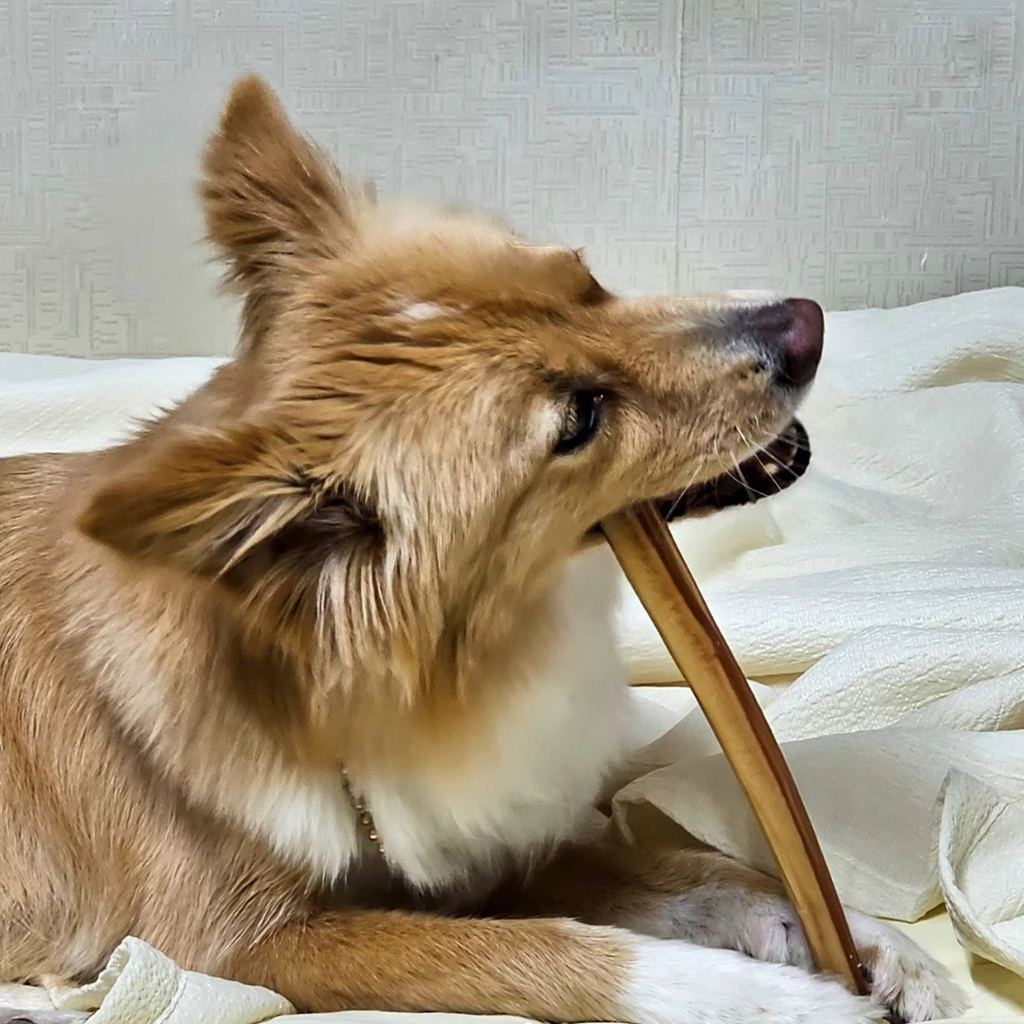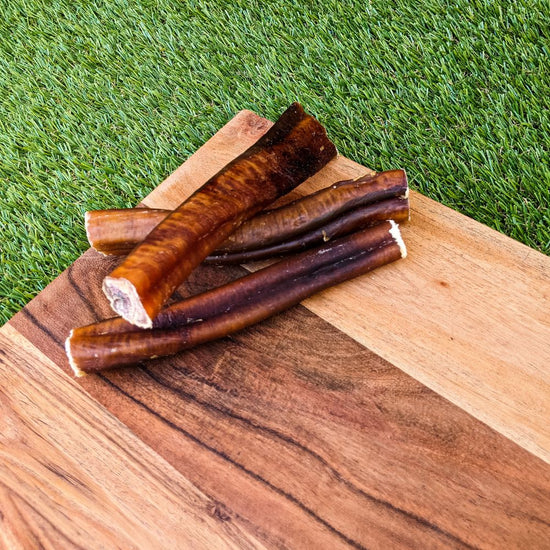
How to Incorporate Bully Sticks into Your Dog's Diet

Bully sticks are a nutritious and natural treat that can be a valuable addition to your dog's diet. In this article, we will discuss how to incorporate bully sticks into your dog's diet safely and effectively, ensuring they enjoy the health benefits without any risks.
Choosing the Right Bully Stick:
- Size and Thickness: Select a bully stick that is appropriate for your dog’s size and chewing habits. Smaller dogs may prefer thinner sticks, while larger dogs can handle thicker, more durable options.
- Quality: Look for high-quality bully sticks made from grass-fed, free-range cattle. Ensure that the sticks are processed without chemicals or artificial additives.
Introducing Bully Sticks to Your Dog:
- Start Slowly: Introduce bully sticks gradually to your dog’s diet, especially if they are not used to chewing on such treats. Start with short chewing sessions to see how your dog reacts.
- Monitor Chewing: Always supervise your dog while they are chewing on a bully stick to prevent choking or swallowing large pieces. Remove the stick once it becomes small enough to pose a choking hazard.
Frequency and Portion Control:
- Moderation: While bully sticks are a healthy treat, they should be given in moderation. One bully stick per day is generally sufficient for most dogs, but this can vary based on your dog's size and dietary needs.
- Balanced Diet: Ensure that bully sticks are part of a balanced diet that includes high-quality dog food and other healthy treats. Bully sticks should not replace regular meals but can be used as a supplementary treat.
Storing Bully Sticks:
- Cool, Dry Place: Store bully sticks in a cool, dry place to maintain their freshness. Airtight containers can help keep them from becoming stale.
- Avoid Moisture: Keep bully sticks away from moisture to prevent mold and bacterial growth. Proper storage ensures that the sticks remain safe and enjoyable for your dog.
Using Bully Sticks for Training:
- Reward System: Use bully sticks as a reward during training sessions. Their high value makes them an excellent motivator for teaching new commands or reinforcing positive behaviors.
- Break into Pieces: For training purposes, you can break bully sticks into smaller pieces. This allows you to use them more effectively as rewards without overfeeding your dog.
Health Considerations:
- Dental Health: Regular chewing on bully sticks promotes dental health by reducing plaque and tartar buildup. Incorporate bully sticks into your dog's dental care routine for optimal oral hygiene.
- Weight Management: Monitor your dog's weight to ensure that the addition of bully sticks does not lead to excessive weight gain. Adjust the portion size or frequency if necessary.
Conclusion: Incorporating bully sticks into your dog's diet can provide numerous health benefits, including improved dental health, mental stimulation, and high-quality protein intake. By choosing the right bully sticks and using them in moderation, you can enhance your dog’s overall well-being while providing them with a delicious and satisfying treat. Always supervise your dog while they chew and ensure that bully sticks are stored properly to maintain their freshness and safety.
FAQs:
- How often should I give my dog a bully stick? Generally, one bully stick per day is sufficient for most dogs, but this may vary based on your dog's size and dietary needs.
- Can bully sticks replace my dog’s regular meals? No, bully sticks should not replace regular meals. They should be used as a supplementary treat as part of a balanced diet.
- How can I store bully sticks to keep them fresh? Store bully sticks in a cool, dry place, preferably in an airtight container to maintain their freshness.






